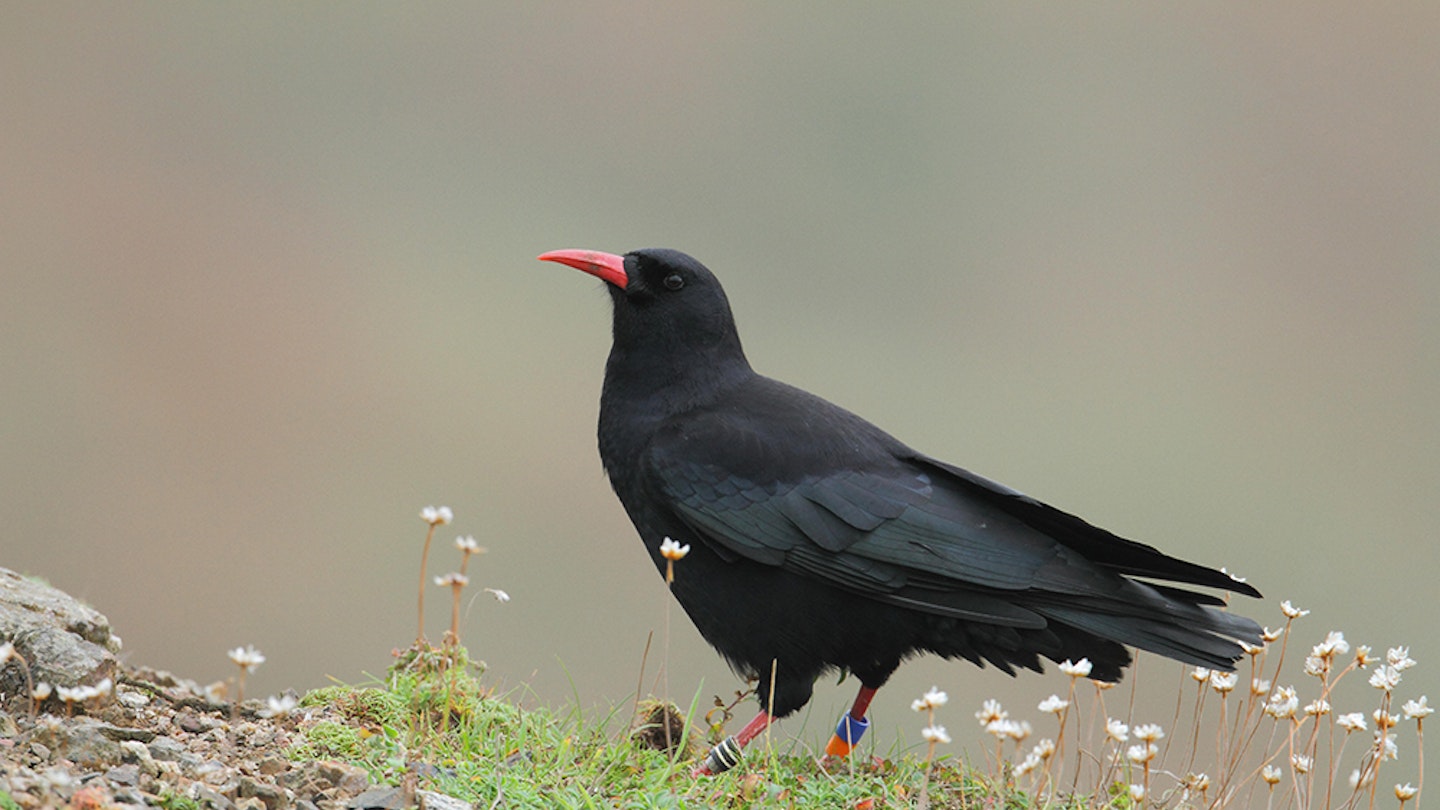Chough (above)
Very much birds of the west in the British Isles, these beautiful red-billed masters of the air, breed in the west of Wales, the Isle of Man Islay in the Inner Hebrides and Cornwall (in tiny numbers), as well as in Ireland (mainly in the west). There are fewer than 500 UK pairs (including 150 on the Isle of Man). These small corvids are mainly seen around rocky coasts with short-cropped grassy areas in which to probe for insect food. If seen well, they are unmistakable with exceptionally broad, ‘fingered’ wings and of course, the red bill and legs.

Sanderling
The Sanderling is a familiar birds on winter beaches, running along the edge of the wavelets like clockwork toys, wrapped in pale, almost white feathers. They are high arctic breeders so are less familiar in summer. However, adults which fail to breed will start returning through the UK in June, wearing very different plumage, with rich brick orange tones on the head and breast, and rufous wing markings. They may even turn up at inland ‘wader sites’ if you are luckily so don’t forget to check this month!

Corn Bunting
These dumpy birds of lowland arable farm country have declined massively in recent years. This is a tragedy, not least because though nondescript in many ways, they are charming birds whose ‘jangling keys’ songs is one of the iconic sounds of the British countryside. Sadly, this sound is now increasingly localised, though more than 10,000 pairs still nest throughout the UK. Corn Buntings are much larger than other buntings, sometimes looking almost Starling sized; they are rounded and streaky and often fly with dangling legs as if too lazy to pull them back to the body. Check hedgerows and overhead wires and listen for that distinctive song.

Dipper
The Dipper is one of those special birds that everyone wants to see! Famous for being shaped like giant Wrens but in striking black-and-white plumage, bobbing on rocks, they are equally renowned for their fearless love of seemingly raging torrents and fast, rocky streams, disappearing into and under the turbulent waters without hesitation. They have strong feet for gripping stones under the water, but also use their wings to ‘fly’ underwater (unlike any other passerines). Check fast, shallow streams and rivers with rocks, particularly in the north and west of the UK and in upland areas. Note that the youngsters, are grey, rather than pied.

Green Sandpiper
One of the most annoyingly named waders, Green Sandpipers are not really green (or at least not green enough to justify the name). Instead they tend to look dark brown and white or black and white. Most notable are the dark underwings and the striking square white rump. Like Sanderlings, non-breeding Green Sandpipers appear from June onwards in the UK. Unlike Sanderlings they have a genuine preference for freshwater habitats, ditches and the edges of gravel pits or sewage farms being favoured. Often the alarm call is the first indication that these shy waders are around, followed by a view of a wader which looks like a huge House Martin, towering away…
